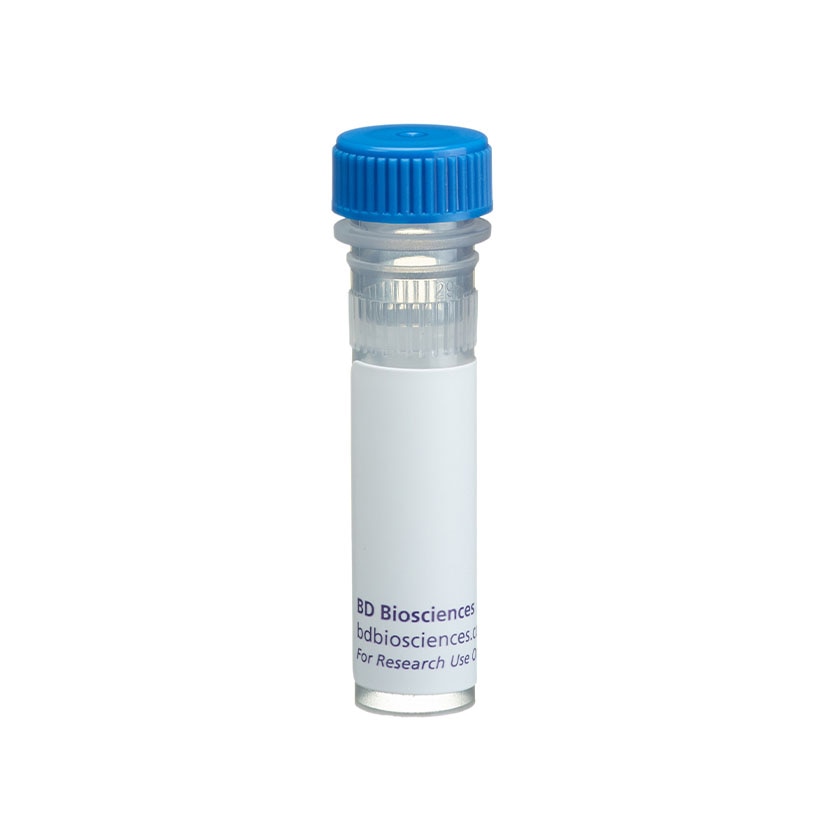Old Browser
This page has been recently translated and is available in French now.
Looks like you're visiting us from {countryName}.
Would you like to stay on the current country site or be switched to your country?





Western blot analysis of GS15 on a SW13 cell lysate (Human adrenal gland carcinoma; ATCC CCL-105). Lane 1: 1:250, lane 2: 1:500, lane 3: 1:1000 dilution of the mouse anti- GS15 antibody.

Immunofluorescence staining of Human intestinal smooth muscle cells (HISM).


BD Transduction Laboratories™ Purified Mouse Anti-GS15

BD Transduction Laboratories™ Purified Mouse Anti-GS15

Regulatory Status Legend
Any use of products other than the permitted use without the express written authorization of Becton, Dickinson and Company is strictly prohibited.
Preparation And Storage
Recommended Assay Procedures
Western blot: Please refer to http://www.bdbiosciences.com/pharmingen/protocols/Western_Blotting.shtml
Product Notices
- Since applications vary, each investigator should titrate the reagent to obtain optimal results.
- Please refer to www.bdbiosciences.com/us/s/resources for technical protocols.
- Source of all serum proteins is from USDA inspected abattoirs located in the United States.
- Caution: Sodium azide yields highly toxic hydrazoic acid under acidic conditions. Dilute azide compounds in running water before discarding to avoid accumulation of potentially explosive deposits in plumbing.
Companion Products

.png?imwidth=320)
Eukaryotic protein trafficking involves the packaging of target molecules into membranous vesicles that bud from a donor compartment, travel to a specific destination, fuse, and release their components into an acceptor compartment. Components of both the vesicle and the synaptic plasma membrane interact to form a fusion complex which mediates specific docking and fusion of vesicles. This complex contains NSF (N-ethyl-maleimide-sensitive factor), SNAPs (soluble NSF attachment proteins), and receptor proteins (SNAREs) that include synaptobrevin, synaptotagmin, syntaxin, and SNAP-25 (synaptosome-associated protein of 25 kDa). SNAP-25 and syntaxin are associated with the target plasma membrane (t-SNAREs), while synaptobrevin and synaptotagmin are vesicle-associated proteins (v-SNAREs). In Drosophila, protein transport from the ER to Golgi involves Bet1p, a v-SNARE. With 28% amino acid identity to Bet1p, GS15 (Golgi SNARE of 15 kDa) is widely expressed in rat tissues. It is an integral membrane protein of the Golgi apparatus and functions as a SNARE. Thus, GS15 is thought to be a novel SNARE that participates in ER-Golgi protein transport through an undefined process.
This antibody is routinely tested by western blot analysis. Other applications were tested at BD Biosciences Pharmingen during antibody development only or reported in the literature.
Development References (5)
-
Beckhelling C, Chang P, Chevalier S, Ford C, Houliston E. Pre-M phase-promoting factor associates with annulate lamellae in Xenopus oocytes and egg extracts. Mol Biol Cell. 2003; 14(3):1125-1137. (Biology: Electron microscopy). View Reference
-
Muller JM, Shorter J, Newman R, et al. Sequential SNARE disassembly and GATE-16-GOS-28 complex assembly mediated by distinct NSF activities drives Golgi membrane fusion. J Cell Biol. 2002; 157(7):1161-1173. (Biology: Western blot). View Reference
-
Shorter J, Beard MB, Seemann J, Dirac-Svejstrup AB, Warren G. Sequential tethering of Golgins and catalysis of SNAREpin assembly by the vesicle-tethering protein p115. J Cell Biol. 2002; 157(1):45-62. (Biology: Western blot). View Reference
-
Xu Y, Martin S, James DE, Hong W. GS15 forms a SNARE complex with syntaxin 5, GS28, and Ykt6 and is implicated in traffic in the early cisternae of the Golgi apparatus. Mol Biol Cell. 2002; 13(10):3493-3507. (Biology: Electron microscopy, Immunofluorescence, Immunoprecipitation, Western blot). View Reference
-
Xu Y, Wong SH, Zhang T, Subramaniam VN, Hong W. GS15, a 15-kilodalton Golgi soluble N-ethylmaleimide-sensitive factor attachment protein receptor (SNARE) homologous to rbet1. J Biol Chem. 1997; 272(32):20162-20166. (Biology). View Reference
Please refer to Support Documents for Quality Certificates
Global - Refer to manufacturer's instructions for use and related User Manuals and Technical data sheets before using this products as described
Comparisons, where applicable, are made against older BD Technology, manual methods or are general performance claims. Comparisons are not made against non-BD technologies, unless otherwise noted.
For Research Use Only. Not for use in diagnostic or therapeutic procedures.
Report a Site Issue
This form is intended to help us improve our website experience. For other support, please visit our Contact Us page.